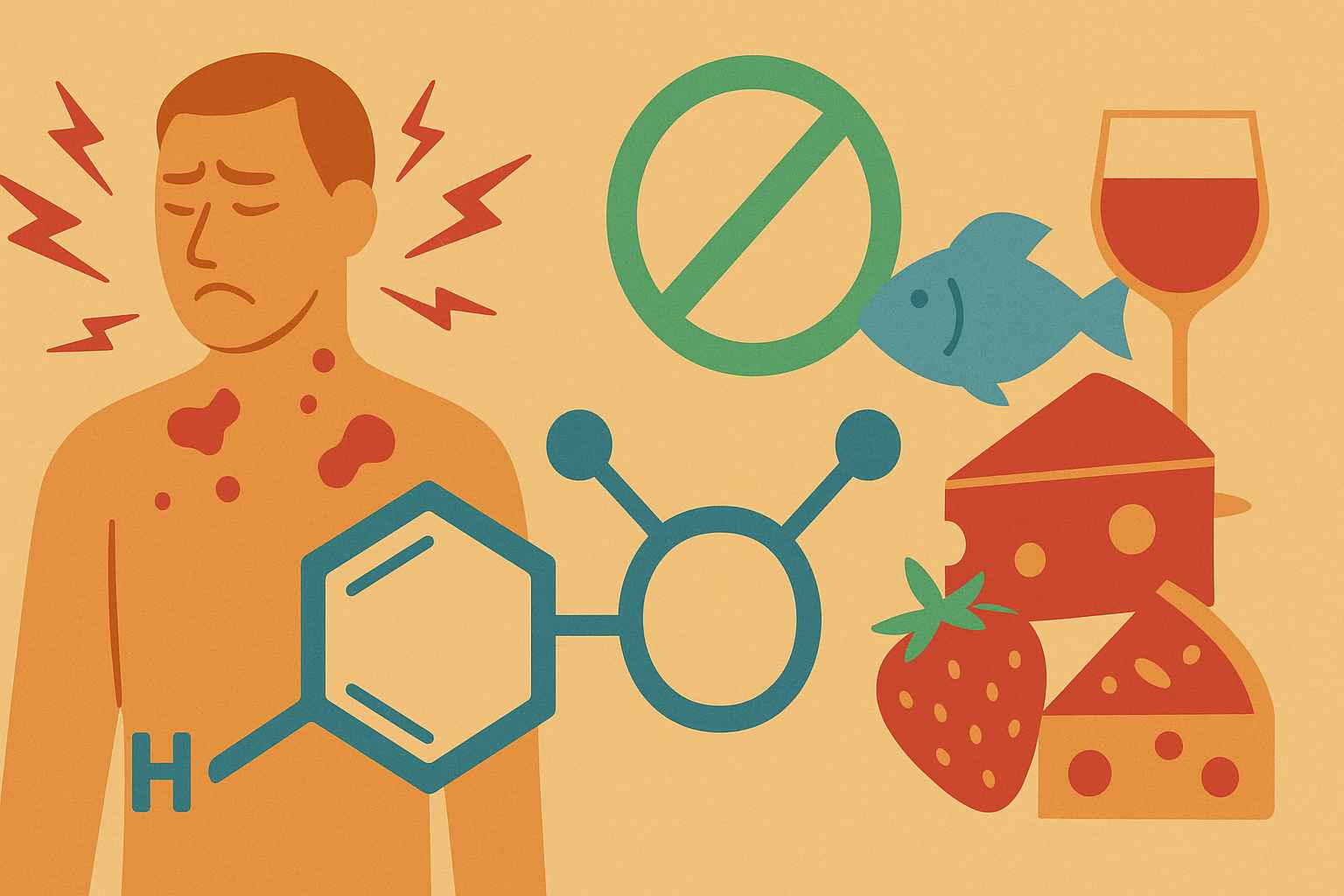Understanding Histamine Intolerance
Histamine intolerance is a condition that affects millions worldwide but often goes undiagnosed. Unlike allergies, which involve an immune system reaction, histamine intolerance occurs when your body cannot properly break down histamine, leading to an accumulation that triggers a wide range of uncomfortable symptoms.
What is Histamine?
Histamine is a chemical compound that serves several important functions in the body:
- Acts as a neurotransmitter in the brain
- Regulates stomach acid production for digestion
- Plays a key role in the immune and inflammatory response
- Helps control the sleep-wake cycle
When functioning normally, enzymes in your body—primarily diamine oxidase (DAO) and histamine N-methyltransferase (HNMT)—break down excess histamine. But when these enzymes don’t work efficiently, histamine levels rise, causing symptoms throughout the body.
Common Symptoms of Histamine Intolerance
Histamine intolerance can manifest in numerous ways, often mimicking other conditions:
- Digestive Issues: Abdominal pain, diarrhea, constipation, bloating
- Skin Reactions: Hives, itching, flushing, eczema flares
- Respiratory Problems: Runny or stuffy nose, sneezing, asthma-like symptoms
- Neurological Effects: Headaches, migraines, dizziness, brain fog
- Cardiovascular Symptoms: Heart palpitations, blood pressure changes
Many people experience these symptoms after consuming histamine-rich foods but may not make the connection.
Causes of Histamine Intolerance
Several factors can contribute to histamine intolerance:
- Genetic factors: Some people naturally produce less DAO enzyme
- Gut health issues: Leaky gut syndrome and gut dysbiosis can reduce DAO production
- Medications: Certain drugs can block DAO activity
- Environmental factors: Pollutants and toxins can increase histamine production
- Nutritional deficiencies: Lack of copper, vitamin B6, vitamin C, and zinc can impair histamine metabolism
Managing Histamine Intolerance
The good news is that histamine intolerance can be managed effectively:
Dietary Approaches
A low-histamine diet is the cornerstone of management. This involves avoiding:
- Fermented foods (sauerkraut, kimchi, yogurt)
- Aged cheeses and cured meats
- Alcohol, especially red wine and champagne
- Certain fruits and vegetables (spinach, tomatoes, avocados, eggplant)
- Processed foods with preservatives
Instead, focus on fresh foods prepared shortly after purchase.
Supplements
Several supplements can help support histamine breakdown:
- DAO enzyme supplements
- Vitamin C
- B vitamins
- Quercetin
- Probiotics (specific strains that don’t increase histamine)
Lifestyle Changes
Beyond diet, consider:
- Stress management techniques
- Regular gentle exercise
- Adequate sleep
- Identifying and addressing environmental triggers
When to Seek Professional Help
If you suspect histamine intolerance, it’s important to work with healthcare professionals who understand this condition. They can help rule out other diagnoses and create a personalized treatment plan.
Conclusion
Living with histamine intolerance can be challenging, but understanding the condition is the first step toward effective management. With the right dietary adjustments, supplements, and lifestyle changes, many people find significant symptom relief and improved quality of life.
Remember that everyone’s experience with histamine intolerance is unique. What works for one person may not work for another, so patience and personalization are key to finding your optimal approach.

